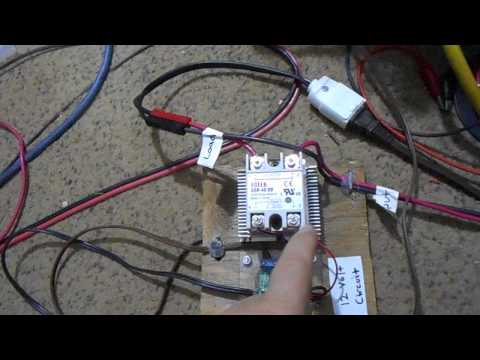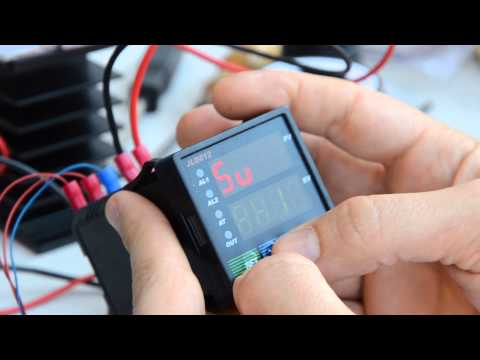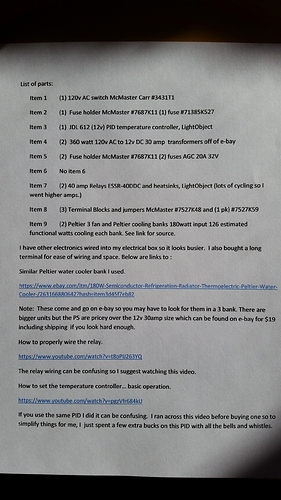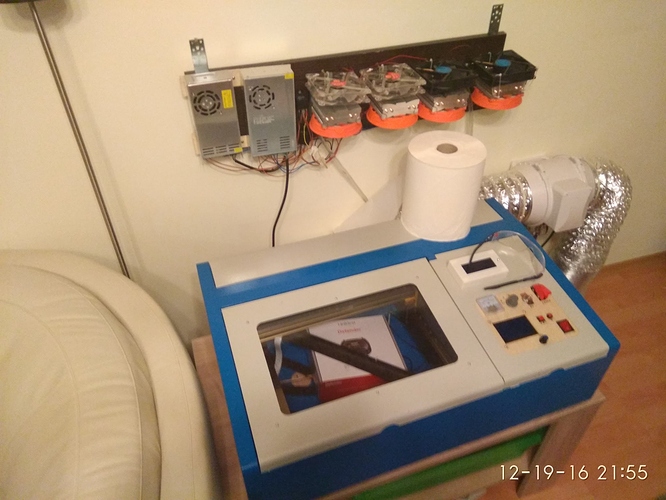This post is long it and is a quick description of the wiring of my Peltiers cooling system asked for by a number of people. For more info on it look back in my post history.
Here is the wire schematic for the two bank Peltier three pads 180 watt units I’ve talked about in past post. The two banks in mine (360 watts) give me about 250 ‘functional’ watts of actual cooling. I’ve used it when temperatures have been in the high 90’s (32 to 35C) without any heating problems and keeping the water within 1 or 2 degrees at all times. So far, no matter how long I’m running the laser. The current history is I have ran the laser for around 45 mins continuous on a raster file and maybe 20 min of a vector cutting 5/16 inch Popular in 95F (35C) temps . In fact, the cooler is only running about 50% of the time once it got to programmed temp.
One thing to watch for with refrigerated cooling is the dew point. I program the operating temp by looking at the current temperature in the room and program about 5 deg above that. However, as the day goes on or the temperatures change the dew point can change. I almost got caught one day so I watch it closely now with one of these cheap digital hygrometers.
I am not trying to keep 19 liters of water cool. I’m only using about 2 ½ liters in a closed and insulated system with a small mixing tank. That’s all. I think this works best for this type of cooling system. With a Peltiers there is no need for all that water. The only reason you use water is it is the cheapest and most efficient way to get the heat out of the laser tube and to the Peltier’s surfaces. There they pull the heat out of the water and draw it out on their radiating (hot) side which has a finned surface area attached and fans to clear the heat. It appears that 250 “functional” watts is a good number for the way I’ve set mine up.
List of parts:
Item 1 (1) 120v AC switch McMaster Carr #3431T1
Item 2 (1) Fuse holder McMaster #7687K11 (1) fuse #71385K527
Item 3 (1) JDL 612 (12v) PID temperature controller, LightObject
Item 4 (2) 360 watt 120v AC to 12v DC 30 amp transformers off of e-bay
Item 5 (2) Fuse holder McMaster #7687K11 (2) fuses AGC 20A 32V
Item 6 No item 6
Item 7 (2) 40 amp Relays ESSR-40DDC and heatsinks, LightObject (lots of cycling so I went higher amps.)
Item 8 (3) Terminal Blocks and jumpers McMaster #7527K48 and (1 pk) #7527K59
Item 9 (2) Peltier 3 fan and Peltier cooling banks 180watt input 126 estimated functional watts cooling each bank. See link for source.
I have other electronics wired into my electrical box so it looks busier. I also bought a long terminal for ease of wiring and space. Below are links to :
Similar Peltier water cooler bank I used.
https://www.ebay.com/itm/180W-Semiconductor-Refrigeration-Radiator-Thermoelectric-Peltier-Water-Cooler-/263166880642?hash=item3d45f7eb82
Note: These come and go on e-bay so you may have to look for them in a 3 bank. There are bigger units but the PS are pricey over the 12v 30amp size which can be found on e-bay for $19 including shipping if you look hard enough.
How to properly wire the relay.
The relay wiring can be confusing so I suggest watching this video.
How to set the temperature controller… basic operation.
If you use the same PID I did it can be confusing. I ran across this video before buying one so to simplify things for me, I just spent a few extra bucks on this PID with all the bells and whistles.






